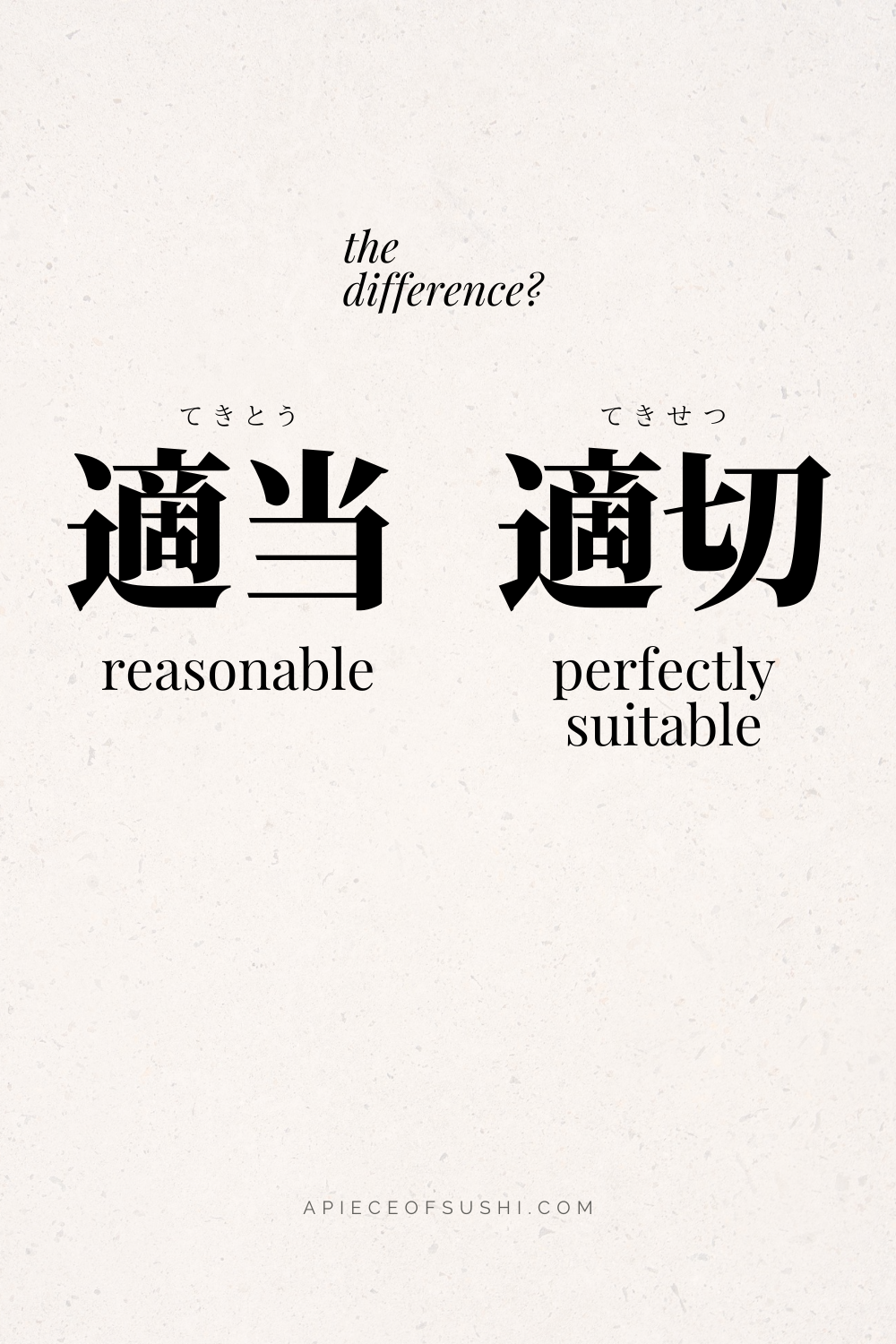
One of my students asked me what is the difference between tekitou(適当) and tekisetsu(適切), so here is my answer to him! (I think it’s a brilliant question!)
What is tekisetsu(適切)?
Tekisetsu(適切) is a Japanese な-adjective meaning ‘the most appropriate’ or ‘the most suitable’
It also means suitable, good for, appropriate, proper for, timely, relevant, and adequate in Japanese-English dictionary.
Tekisetsu(適切) is used in words like,
適切な質問
Tekisetsu na shitsumon
a relevant question
不適切な発言
Futekisetsu na hatsugen
an improper remark
*fu(不) is like an English prefix ‘un’
適切な引用
Tekisetsu na inyou
a suitable quotation
What is tekitou(適当)?
Tekitou(適当) is also a Japanese な-adjective meaning ‘reasonable’, ‘the most reasonable’
But unlike tekisetsu(適切), tekitou(適当) is a flexible and interchangeable option, it is not a suitable option, it’s a reasonable option.
適当な条件で
Tekitou na jyouken de
on fair(reasonable) terms
Tekitou(適当) can mean another thing!
Tekitou becomes a Japanese slang among young Japanese people, sometimes it is written with Katakana as テキトー(read as tekitoo) meaning irresponsible, sloppy, roughly, carelessly.
お母さんにお手伝いを頼まれたけどテキトーにしちゃおう。🧹
Okaasan ni o-tetsudai wo tanomareta kedo tekitoo ni shichaou.
My mom asked me to help her but I’ll just give a quick help. (like a very sloppy help!)
適当な人
Tekitou na hito
an irresponsible person
適当に選んでください。
Tekitou ni erande kudasai.
Please pick up whatever suits you.
So what’s the difference between tekitou(適当) and tekisetsu(適切)?
Tekitou(適当) is a REASONABLE fit among a wide range of options.
Tekisetsu(適切) is the PERFECT fit, the most perfectly suitable thing.
I hope this post helped you!
